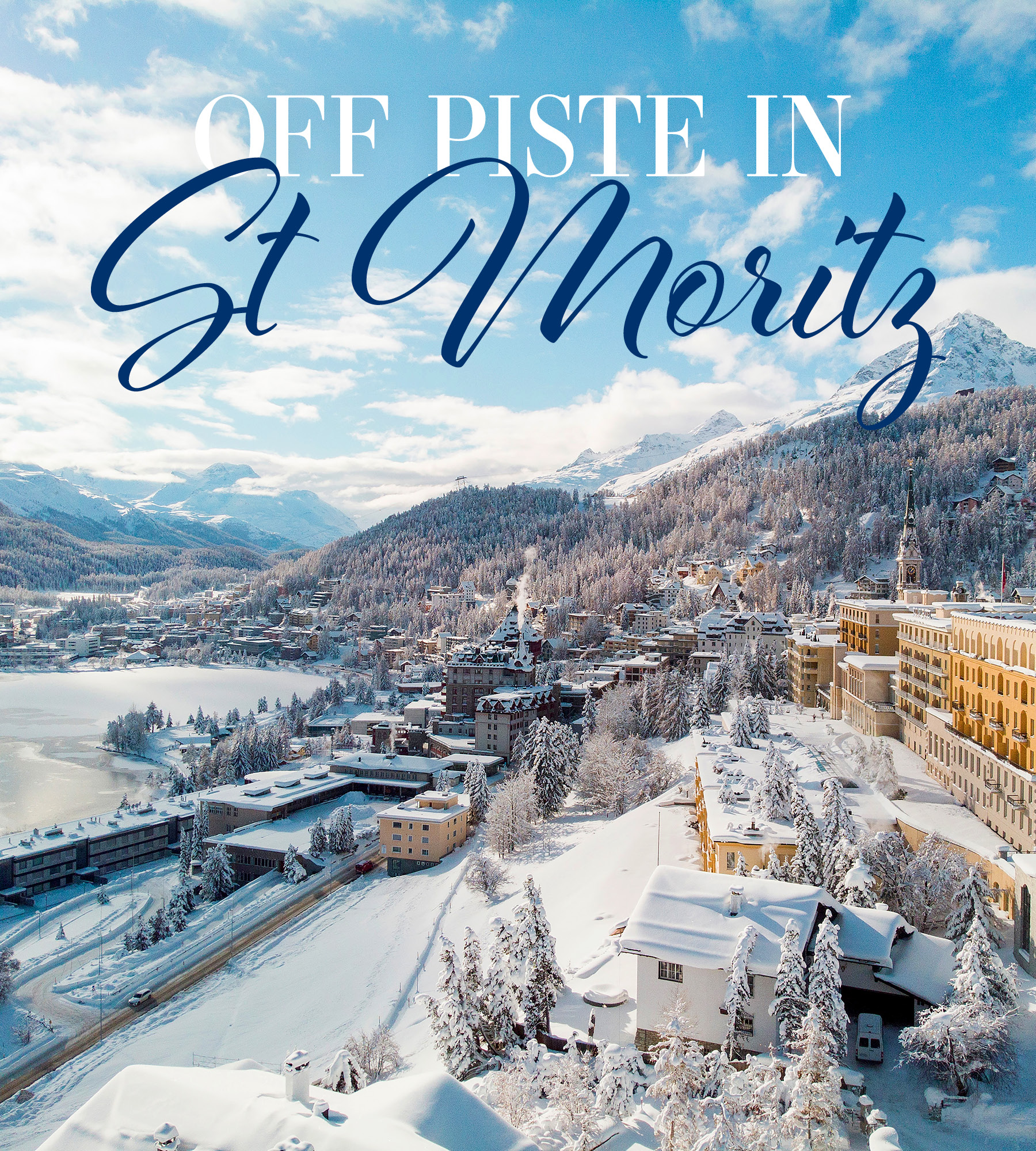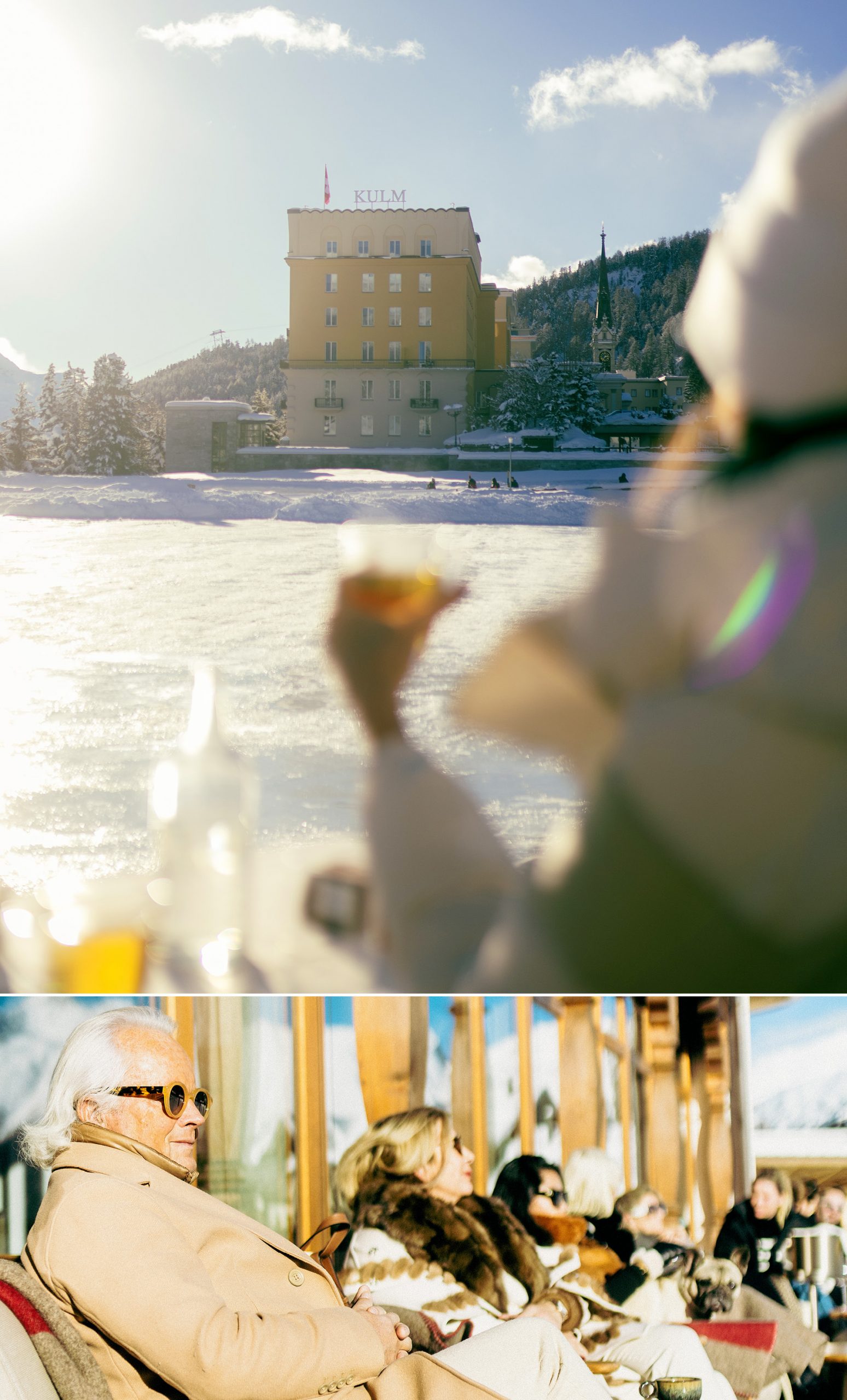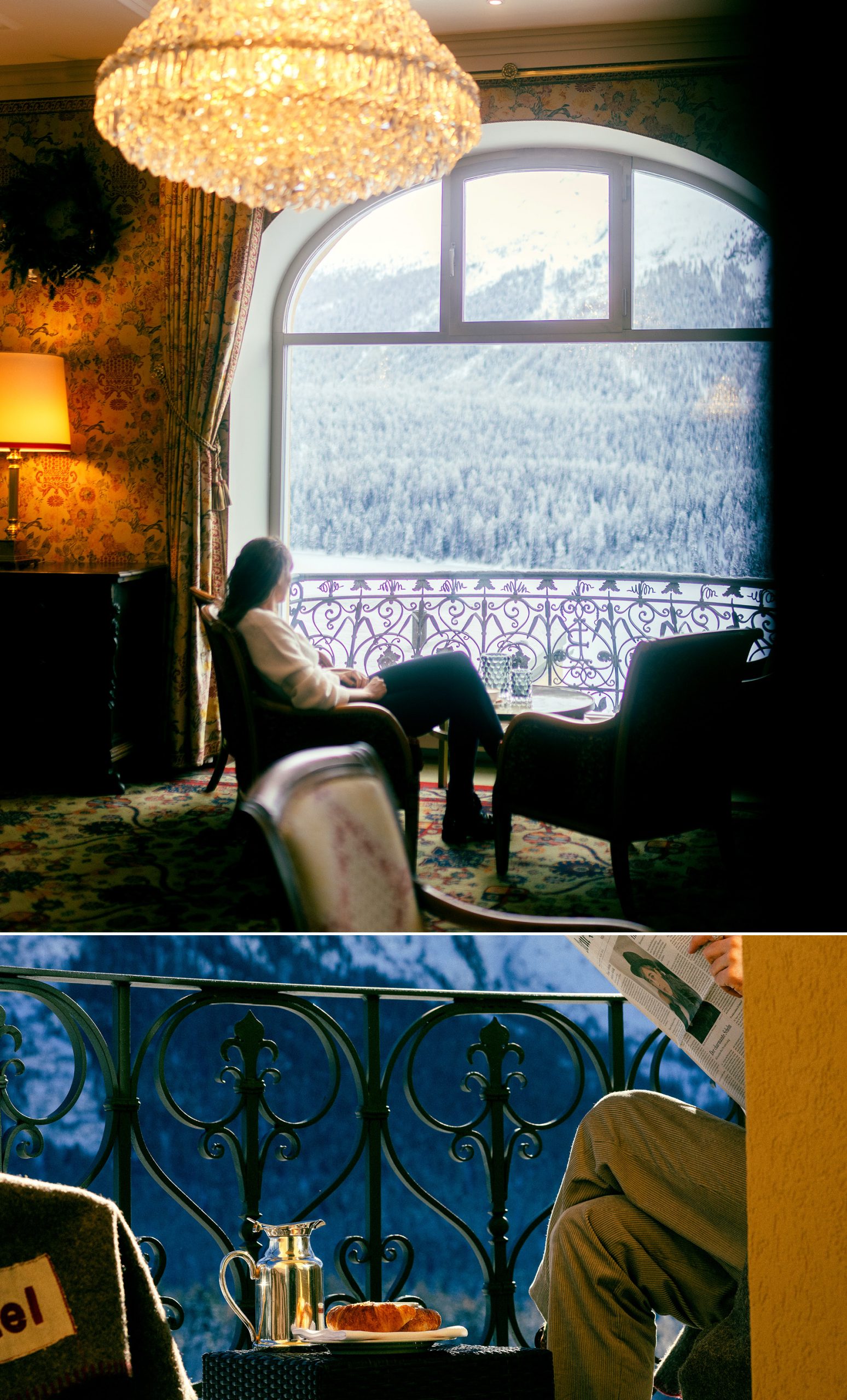Language
You can read the magazine in one of the following languages
Geolocation
You can read the global content or the content from your region

Right on cue, a sprinkling of snow tumbles down as we arrive on the Glacier Express at glamorous St Moritz, in the Engadin Valley in south-east Switzerland. It’s known for its showstopper scenery, which I simply can’t take my eyes off, and attracts three types of holidaymakers – those who come to ski or hike, those who come to be seen and those who come to watch.
It all started in 1864 with a legendary bet by hotelier Johannes Badrutt, who needed to entice his summer guests.
I’m here to watch and soon find myself scanning the streets for A-listers, movie stars, royalty and wealthy tycoons, but I’m a little rusty on who is who. Regardless, there’s a constant parade of fashionistas clad in faux-fur jackets, fluffy boots and sparkly jewelry, carting tiny dogs in designer bags, and men dressed in smart ski gear.
Family groups with young children are tossing snowballs and there’s a cute lopsided snowman staring back at me, along with Aussie accents ringing out across the street. Locals balancing grocery bags pass by and tradesmen look busy too in this alpine playground.
But it doesn’t take long to brush aside a little glitz to discover St Moritz, one of the world’s oldest ski resorts, is much more than a flashy facade.
It all started in 1864 with a legendary bet by hotelier Johannes Badrutt, who needed to entice his summer guests – who came for the mineral springs and picture-perfect holidays – to return in winter. He issued Christmas invitations offering to cover traveling costs if they weren’t happy frolicking in the snow. They came and some stayed for months, which saw the birth of winter tourism and a new alpine industry.
Fast forward 160 years and I am sitting in a ruby red velvet armchair in the lobby of Badrutt’s historic Hotel Kulm, overlooking the snowclad Albula Alps and frozen Lake St Moritz, where preparations are underway for the annual Snow Polo World Cup. The 150-room Kulm Hotel has long been the center of many firsts: it was the first in Switzerland to turn on electric lights, install telephones and was at the heart of the first Winter Olympics in 1928.

They came and some stayed for months, which saw the birth of winter tourism and a new alpine industry.
French, Italian and British accents can be heard amid hearty laughter from a group of Australians, who sit fireside after a day on the slopes, which they describe as the best ever.
“This is a dream destination and the snow is fabulous. It really is a winter wonderland, and we want to return in summer,” Miranda Lees, from Sydney, says.
A pianist plays on a baby grand while bubbles and strawberry daiquiris are served along with high tea treats, but it’s those views that command attention.
Dining is an adventure here and there are three new hotel restaurants with fabulous chefs and new menus. Michelin-starred Mauro Colagreco takes the helm at the iconic Kulm Country Club, where we dine on crayfish bisque with black truffle, flambé Swiss veal chop with mâitre d’hotel butter and a finale of wild berries with alpine sour cream and Edelweiss sorbet.
The ambiance and service are exemplary and I also love the photos that capture those early skiing days. We return for a lunchtime fondue, which is the best I have tasted, sitting on the sun-soaked terrace, while we watch ice skaters of all abilities swish by.
The next day we meet charismatic British chef Tom Booton, from The Grill at London’s Dorchester Hotel, who has revamped the menu at the legendary Sunny Bar. It’s a novel version of gastro pub food, merging Swiss ingredients with British classics including ‘frickles’ – fried pickles, with Raclette du Valais, Tom’s Hoad in the Hole and addictive, chunky chips.

The ambiance and service are exemplary and I also love the photos that capture those early skiing days.
“It’s all about serving the best of British cuisine, in the oldest sports bar in the Alps,” Booton says.
The Sunny Bar pays tribute to the famous Cresta Runners – those who have braved the challenging icy toboggan run that started in 1885 and is rebuilt every year. There’s quite a photo gallery of daredevils who have conquered their fears.
My favorite restaurant is the cute Peruvian eatery, Amaru, where Lima-born chef, Claudia Canessa stars. She’s known for her great street treats, including ceviche that’s to die for. Her chili coconut soup, seafood medley and Lucuma ice cream, remain memorable.

I want to linger in my lake-view suite, fresh from a redesign by Pierre-Yves Rochon, showcasing an elegant, understated alpine-inspired feel and soft hues with pops of color.
It’s a feast for the senses accompanied by fabulous pisco sours and amazing service in the Luke Edward Hall designed restaurant that’s a little like stepping into Aladdin’s Cave with magical Peruvian touches. The room sings with Hall’s favorite palette of green, pink and yellow and his drawings sit alongside paintings by Peruvian artist, Ernesto Gutierrez.
Kulm’s General Manager Heinz Hunkeler, who follows in his father’s footsteps, describes the hotel as a bastion of tradition and the home of creativity and innovation in hospitality. “It is always our desire to work with cultural pioneers, who can help create a sense of magical escapism for our guests,” he says.
I want to linger in my lake-view suite, fresh from a redesign by Pierre-Yves Rochon, showcasing an elegant, understated alpine-inspired feel and soft hues with pops of color, but next stop is sister hotel, The Grand Kronenhof, in the village of Pontresina, 10 minutes away.
Pierre-Yves Rochon has also worked his magic here in the 175-year-old star of luxury Swiss hospitality. Standout haunts include the elegant Kronenhof Bar with red velvet pops of color and a smoking room with emerald green velvet armchairs and caramel leather sofas.
But in the grand lobby salon, where every shade of blue stars, it is the huge windows overlooking the spectacular Corviglia Mountain range and ceiling frescos, that impress the most. Nature, wellness and dining are the focus of the 112-room hotel, where the first owner would count the guests’ pieces of luggage, then decide the tariff.

Wander outside to enjoy the crisp air filled with the heady scents of the nearby wild pine and larch forests.
Breakfast in the elegant Grand Restaurant with its neo-baroque vault dating from 1872, is a great start to the day, followed by lunch outdoors at Le Pavillon overlooking Val Roseg glaciers and ice-skaters.
At the much-awarded Kronenstübli restaurant, the signature dish Canard à la Presse – one of the most spectacular classics of French cuisine – is impressively created tableside.
Guests can relax in the award-winning spa with treatments centered on relaxation and regeneration, plus there’s a heated pool and morning yoga. Then wander outside to enjoy the crisp air filled with the heady scents of nearby wild pine and larch forests.
Both hotels offer high point experiences, including mountain meditations, art tours, fly fishing, forest bathing and adrenaline-pumping moonlight paragliding.
We take a tamer option with author Pauline Martinet, who has just penned a book on the 500-year-old decorative design art form known as sgraffito. She points out the traditional and contemporary sgraffito high up on Pontresina’s building facades, revealing the folklore behind them.

Both hotels offer high point experiences, including mountain meditations, art tours, fly fishing, forest bathing and adrenaline-pumping moonlight paragliding.
St Moritz is a place for all seasons. In summer it’s all about great hikes, bike rides and gorgeous wildflower-strewn meadows, while in winter it’s long runs, après skiing, roaring fires and fondue.
I get the feeling Johannes Badrutt would be happy today.
The Kulm Hotel: www.kulm.com
The Grand Hotel Kronenhof: www.kronenhof.com
A first-class Swiss Travel Pass provides unlimited travel by train, bus and boat and free entry to more than 500 museums. These can be bought at www.myswitzerland.com/tickets.
For general information visit www.MySwitzerland.com